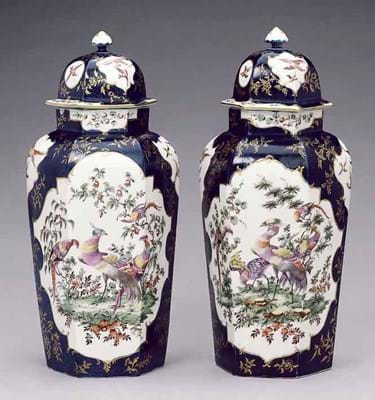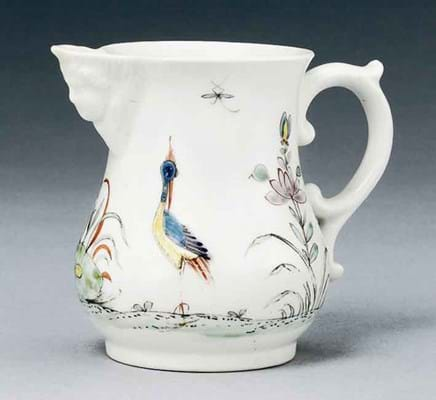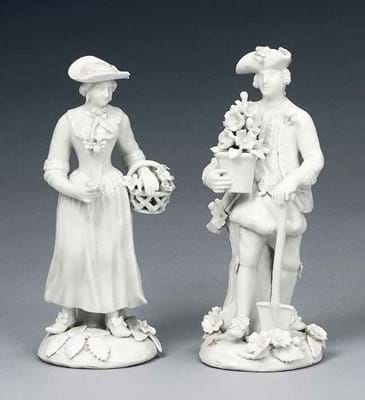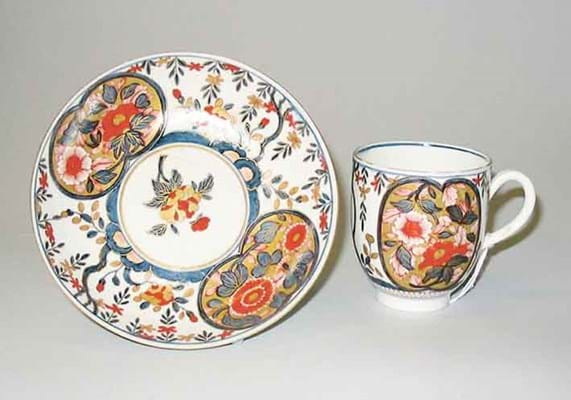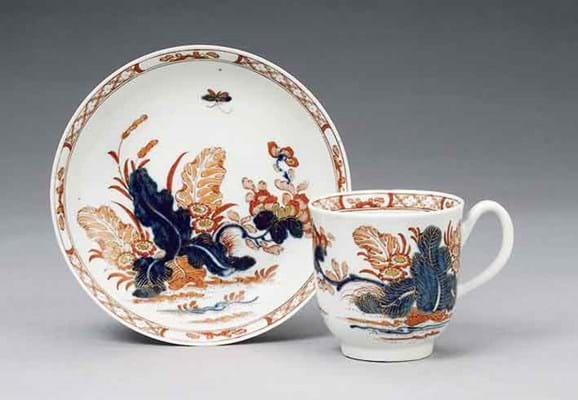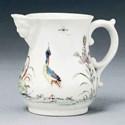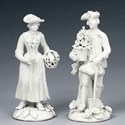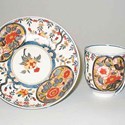It would seem that the 'last chance saloon' factor held out over the 'spoiled for choice' argument.
This third and final 403-lot session, offered by Bonhams (20/12% buyer's premium) on February 22, netted £557,530, more than either of the two previous similar-sized sessions with only two lots left unsold and some even more bullish prices.
The sale again attracted a full room. It wasn't as packed as the first session but all the main players were there, both trade and private. Equally there was none of the toe-in-the-water trepidation that had characterised the opening lots in Part One - buyers had the two preceding sales to provide a benchmark.
Although many dealers were bidding there was dogged pursuit by collectors and of the 85 successful buyers only 16 were trade. In the event, the lion's share of the sale probably went to four buyers. Three were collectors (one of whom also bought heavily in the previous Zorensky auctions).
The fourth was the well known dealer Jupiter Antiques who have also been active at all three sales Trade worries about flooding the Worcester market, voiced when it was first announced that the American collectors Jeanne and Milton Zorenksy were putting their mammoth collection on the market, must surely have abated after this.
The whole exercise proved that potential difficulties can be countered with careful marketing and judicious estimation. In the property's favour was the collection's renown.
Publication by the Antique Collectors' Club of a detailed volume written by Simon Spero and John Sandon meant the world was well aware of what the Zorenskys 25-year collecting odyssey had unearthed and Bonhams correctly assumed that a souvenir-hunting element would come into play.
Condition presented a potential problem for less fashionable or standard wares - the Zorenskys desire to be comprehensive meant that much of the material had damage and repair - but attractive reserves were set to counter this. As Simon Spero, a man with much experience of buying Worcester at auction under his belt observed, "large estimates don't just intimidate prospective buyers, they deter them from joining in".
Unfashionable revival
One of the success stories of this series of sales has been the re-evalution of the hitherto unfashionable later First Period porcelains: the rococo designs with coloured grounds like scale blue and yellow and the Sèvres patterns.
The top priced lot of the collection was a pair of hexagonal 'shagreen' and iron-red ground covered vases of c.1765-8 with 'dragons in compartment' decoration that sold for £29,000 in the first sale. But Part Three followed not far behind at £28,000 with another pair of the same shape and similar date shown here.
These were slightly larger at 14.75in (38cm) and featured a rare powder blue ground and so called fancy birds decoration. This was double Bonhams' estimate although the fact that it was some way short of the £44,000 paid for a better preserved pair offered in a various owners' sale in the same rooms last September, shows that buyers are not utterly thrown by a celebrated provenance and are still condition-conscious.
If the resurgence of interest in scale-blue was a factor in the Zorensky auctions, even more of a surprise was the interest in Imari decorated pieces. This is generally viewed very much as American market material and is particularly popular with transatlantic decorators but hitherto has not been highly collectable on this side of the Atlantic. Given this, Bonhams had placed very modest estimates on these pieces.
However interest from British and Japanese collectors ensured they were well beaten. Perhaps the most dramatic instance was a coffee cup and saucer of c.1770. This had rare decoration - apparently an exact copy of a Chinese Imari original and as such was perhaps made to replace an element in an existing service.
But rarity in unfashionable fields doesn't always equate to high cost, especially as in this instance the saucer was cracked. Bonhams estimated cup and saucer at £160-240, not much more than the £120 or so that Simon Spero reckoned he had charged the Zorenskys for it 20- odd years ago. The final price of £2000, paid after a battle between a collector and overseas bidder, made mincemeat of that.
The same was true two lots later. A cup and saucer of c.1757- 60 also shown featuring an early example of Japanese-inspired floral decoration within a Chinese style border again suggested a Chinese Imari source.
Retrospectively John Sandon admitted his £250-300 estimate was too modest for a piece of such early date but the final price of £1500 from an English collector was still dramatic.
Early rarities
Like the previous two Zorensky sales this tranche had a good supply of fashionable earlier Worcester wares whose fortunes have been much more predictable in recent times. Leading this list of choice and desirable rarities was the little 2.5in (6.4cm), c.1752-3, cream jug, painted with the so called 'strutting bird' pattern and moulded with a female mask to the lip.
With just a handful of other examples featuring the same mask or a similar pattern this certainly qualifies for cataloguer John Sandon's "exceptionally rare" description. The nearest comparable piece is probably the mask-lipped jug in the Klepser collection.
For price comparison we have Billie Paine's jug with near identical strutting bird decoration but simple sparrow beak lip bought by Steppes Hill Farm Antiques at the 2003 sale of her collection for £6200. Bonhams had estimated the Zorensky jug at £10,000-12,000. It was a bullish sum but proved justified when it sold to a phone bidder at £13,500.
Following it at a mid-estimate £9500, paid by London dealer Robyn Robb, was an even smaller fluted jug of the same period delicately painted in Chinese style enamels with a figure passing a fence and typical shrubs issuing from rockwork.This compared to the £6500 that it fetched in 1990 when Christie's offered the second instalment of ceramics from the Rous Lench collection.
The day's second highest price was paid for another Rous Lench purchase this time from Sotheby's benchmark first sale of 1986.
This was a pair of 6.75in (17cm) white figures of gardeners of c.1768 which the Zorenskys had bought for £9000 plus premium 20 years ago. Bonhams hadn't set their £7000-10,000 estimate any higher (white figures can be problematic in today's market and the bullish Rous Lench prices have proved difficult to replicate), but the pair improved to £14,000.
The total for the entire three sales brings the final tally for Jeanne and Milton Zorensky's collection to just under £1.6m.

